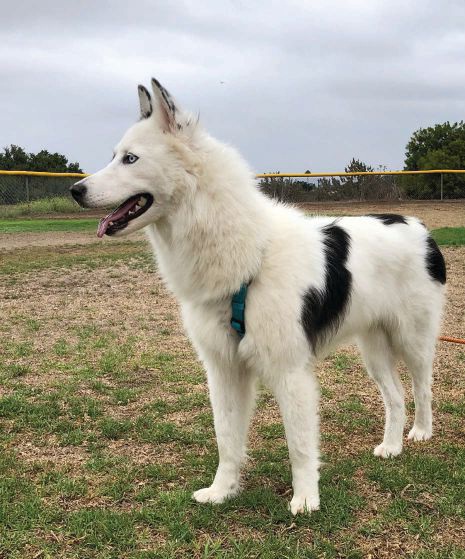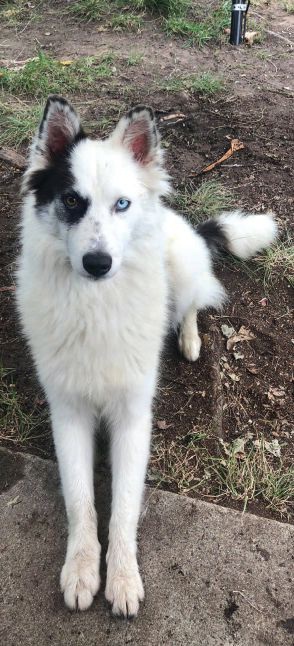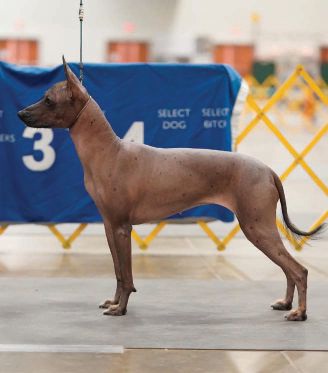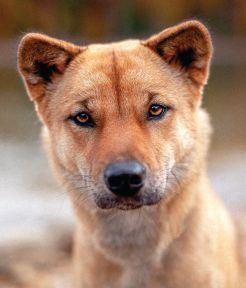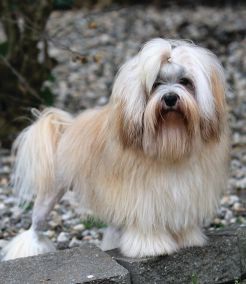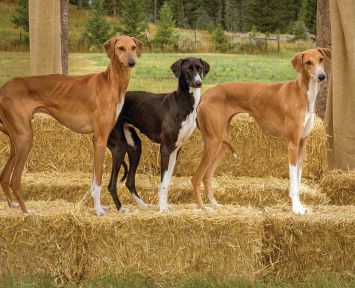The American Kennel Club (AKC) currently lists 197 registered dog breeds, with more gaining recognition every year. The Fédération Cynologique Internationale (FCI), the largest canine organization in the world, acknowledges approximately 360 dog breeds worldwide. With that many dog breeds out there, it’s likely there are ones you’ve never heard of—even some of the breeds that have been around the longest.
Many breed origins tie closely with our own ancient past, opening a window into the human-canine relationship throughout the centuries. Here are some rare breeds with fascinating stories, from their rich histories to their unique characteristics.
Hungarian Mudi
The mudi (pronounced “moodee”) is one of several unique dog breeds to originate from Hungary, a landlocked European country wedged between Slovakia, Ukraine, Romania, Serbia, Croatia, Slovenia, and Austria. The Hungarian mudi is a medium-sized curly-coated wonder, adept as an all-purpose farm dog. Historically bred for work rather than a designated standard, the origin of the mudi intertwines with that of the puli and pumi (both also medium-sized Hungarian herding dogs), as their early histories tend to be similar. The Hungarian farmers developed the breed standard unintentionally, simply crossing apt and able sheepdogs within the proper size range. As such, the mudi is considered one of the oldest of the Hungarian farm breeds, as its initial historic origin cannot even be officially traced, which has led to some contentious debate.

In 1930, Dr. Deszö Fényesi began to standardize the breed and gave them the mudi name; in 1966, Dr. Zoltan Balassy wrote the official breed standard for FCI recognition. The AKC has yet to fully recognize the Hungarian mudi, but they are currently placed in the Miscellaneous Class until the AKC Board of Directors accepts the breed for regular status.
The mudi is an eye-catching breed, coming in a variety of coat colors and natural tail variations. What remains uniform across the standard is the beautiful curly or wavy coat, giving this breed a recognizable appearance for those who are aware of its existence. A small breed, the mudi weighs just 24 to 29 pounds by standard.
Those who open their homes to the mudi find the breed makes a fun and intelligent companion, closely bonded to their person. Their quick thinking is akin to independent working dogs, having to make key decisions in their various farm roles. Keeping the breed’s purpose in mind, the mudi is a very alert and vocal dog, ensuring their owner acknowledges all the outer workings of the home. The mudi is sensitive to pressure and harsh handling and requires a gentle hand in training. Early socialization is key, as the mudi can be wary and shy of strangers.
Keen to work, the mudi is a fantastic candidate for herding or obedience sports, with their courageous fervor for adventure and powerful bond to their human. Today, the mudi remains a pride and joy of the Hungarian people, continuing to fulfill their duties as intelligent, alert, and agile farm dogs.
Yakutian Laika
The Yakutian people, much like many other parts of the world, have had a longstanding relationship with dogs for thousands of years, an ancient relationship that progresses today. Approximately 12,500 years ago, three mummified remains of puppies were found near the village of Tumat in Yakutia—likely the ancestors of the remarkable breed known as the Yakutian laika. In Russian, the word laika means—very appropriately—“barker.”
Much like other known breeds from the Eastern European part of the world, Yakutian laikas primarily serve as sled dogs, helping transport cargo and people. The Yakutian people were apt at developing sledding techniques, both in the training of the dogs and the management of the operation. The Yakutian laika’s existence aided in tremendous geographical discoveries and human exploration of some of the most frigid climates on earth. Yakutian laikas can be seen in native art from the region, with many very specific references made to the breed through historical documents, archeological findings, and even through postal intercourse. At the same time, Yakutian laikas were equally bred for hunting—they use their bark to signal to their human that they’ve spotted prey.
In 1958, the first All-Union Exhibition of Service and Hunting Dogs was held in Moscow. At this show, the Yakutian laika represented the region, and in 1959, a breed standard for Siberian laikas was published. This Siberian laika standard embodied dogs from northeast Russia. The establishment of the Siberian laika standard eventually led to the development of a Yakut laika standard, published officially in 2005. The heavy reliance on sled dogs to carry out scientific research in cold climates has given Yakutian laikas many opportunities to travel outside of their home country. The breed’s innate skill and capability make the Yakut laika a universally useful breed in various areas of the world.
The Yakutian laika is medium sized, known for its strong and compact build. The unknowing individual may compare the breed to the Alaskan malamute or Siberian husky in appearance, but the Yakutian laika is quite different. Their coat is beautiful, long, and well developed to withstand the harshest of arctic conditions. According to the official FCI standard, which was published April 4, 2019, the Yakut laika is brave and confident, agile and athletic, outgoing and friendly, as well as very sociable, all of which contributing to the breed’s ability to serve its primary purpose. With their athleticism comes the desire for exercise and stimulation, making the Yakutian laika best suited for active people who can give them the exercise they crave. Those who enjoy the company of the Yakutian laika revel in the breed’s affection and playfulness, their gentleness with children that are a part of their family, and their faithful companionship.
Xoloitzcuintle
Despite being the official dog of Mexico, the xoloitzcuintle— pronounced “show-low-itzqueentli,” or xolo for short—is a breed you’ll rarely see out and about. Once known as the Mexican Hairless Dog, the xolo is known for its distinct hairless appearance (although they do also come in a coated variety). So, if you are lucky enough to spot one, you’ll know it.
As one of the oldest breeds in the world, the xolo is a living window into Mexico’s ancient civilizations. The Aztecs greatly revered the xolo, believing it had mystical healing powers. Xolo owners can certainly attest to their four-legged companions healing the soul with their deep emotional connections to their humans. These dogs are intelligent, alert, cheerful, calm, protective, and most of all, companionable. The xolo received its full name as a combination of the Aztec god Xolotl and Itzcuintli, the Aztec word for dog.
In more modern history, the xolo was first seen in dog shows around the 1950s, but the general population showed little interest in the breed. It soon became apparent that the xolo was at risk of extinction if humans didn’t intervene, and so they launched a widely publicized effort, the Xolo Expedition of 1954. This expedition brought home some of the finest specimens of the breed, which became the foundation of the xolos we see today. A committee authored the first official standard for the breed, and it was fully adopted in 1956.
Xolos are largely known for their lack of fur; however, coated xolos can be born into the same litters as the hairless variety. Generally, all xolos exhibit the same typical temperament, but they come in one of three sizes: toy, between 10 and 14 inches tall; miniature, between 14 and 18 inches tall; and standard, between 18 and 23 inches tall.
Standard xolos make great guardians of home and family, the miniatures can be counted on to be especially playful (and humorous), and the toys make the ideal lapdog. This rare breed is becoming more popular, likely due to the breed’s keen intellect, ease of care, and eye-catching appearance.
Families with xolos find them to be affectionate and loving, forming a tight-knit bond with family members that makes the house feel complete. The grooming requirements are unique in the hairless variety, with those dogs needing regular bathing and moisturizers to keep the skin healthy. Xolos need structure in their training, with household rules taught early on (or the dog will make its own rules!). The breed is athletic and benefits greatly from daily exercise. As a primitive breed, xolos have an independent streak that can’t be underestimated by their owners. But with early training, socialization and lots of love, the xolo can be an ideal family pet.
Kishu Ken

The Kishu Ken is a stunning dog breed hailing from Japan, specifically the Kii Peninsula (where modern-day Wakayama and Mie prefectures sit). Considered a newer breed relative to other dogs in the world, the Kishu Ken has only been officially recognized for approximately 100 years. Their ancestors are the wolf-descended hunting dogs of the region. Adept hunters themselves, the Kishu Ken are said to have ancient familial ties to the Japanese wolf, maintaining some of those primitive physiological traits in their blood to this day.
From webbed paws and curved canines to rear dew claws that can be found in some members of the breed, the characteristics that point back to their origins are clear. Described by the AKC as faithful, docile, and noble, the Kishu Ken displays a confident and alert expression, paying homage to their purpose in Japan. Their erect ears and beautiful curled tail adorn a muscular body, while the Kishu Ken’s head is broad with a straight muzzle.
Like many region-specific breeds, World War II caused the Kishu Ken’s numbers to dwindle. The breed was spared due to geographical advantages, with hunters keeping their prized pups away from the battle in the mountainous and isolated region they originate from. Today, the Kishu Ken is still used predominantly in boar hunting in Japan. While their numbers are few in the United States, in Japan the breed is designated a “Memorial of Nature,” an honor bestowed on the Kishu Ken in 1934.
The Kishu Ken embodies three core Japanese characteristics that breed standards call for in all of Japan’s native breeds: Kan-i, Ryousei, and Soboku. Kan-i relates to the dog being spirited and vigorous in their being. Ryousei requires the dog to be obedient, good-natured, and fiercely devoted. Soboku refers to their beauty, simplicity, and rustic elegance.
In training, the Kishu Ken requires consistency and doesn’t take well to forcible handling. This breed is wary of animals (and sometimes people) they don’t know, and their prey drive is strong. Under a gentle hand, the Kishu Ken is a very biddable and willing-to-please dog, especially compared to some other Japanese breeds.
If raised alongside children, the Kishu Ken can make a wonderful family dog—they’re affectionate, curious, and they want to be included in all family activities. These smart dogs are always up for a challenge, so plan to give them a daily walk, in addition to an “adventure” or enriching activity (hiking in a new place, walking in a new neighborhood, or introducing a novel toy or item).
Additional rare breeds:
Czechoslovakian Vlcak
Korean Jindo
Löwchen
Azawakh

